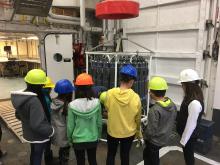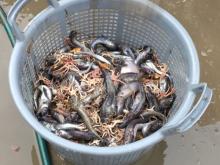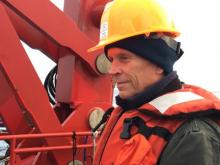Update
Now Archived! PolarConnect event with Lisa Seff and the 'Upwelling and Ecology in the Beaufort Sea Research Team' held on 14 September 2017. This event was broadcast live from the R/V Sikuliaq located in the Beaufort Sea. You can access this and other events on the PolarConnect Archives site.
What Are They Doing?
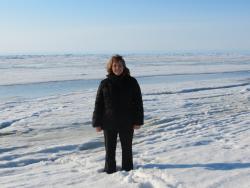
The team plans to explore and identify the mechanisms linking broad-scale atmospheric forcing, ocean physical response, prey-base condition and distribution, upper trophic level animal aggregations, and climate change along the Beaufort Shelf break. The team's overarching hypothesis is that atmospherically-forced (wind-induced) upwelling along this shelf break leads to enhanced feeding opportunities for intermediate links in the pelagic ecosystem (zooplankton, forage fish) that in turn sustain the exploitation of this environment by animals such as beluga whales, seabirds, and seals. Support for the teacher is provided through the research project funding.
Where Are They?
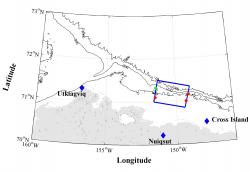
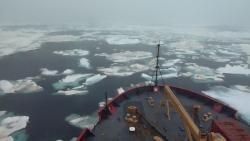
Latest Journals

Dr. Carin Ashjian studies marine biology and ecology with a special interest in the ecology of zooplankton in the Polar Regions, as these ecosystems may be significantly impacted by climate change. Her studies have taken her to both the Arctic and the Antarctic. For eleven years, she worked near Utqiaġvik/Barrow AK using a research vessel to study how and why this region is a feeding hotspot for bowhead whales during their fall migration from Canada to the Bering Sea. She also has worked from much larger research vessels, the USCGC Healy and the R/V SIkuliaq, to study zooplankton in the Bering, Chukchi, and Beaufort Seas. Past research has taken her to the Sea of Japan, the Norwegian Sea, Georges Bank, the Gulf Stream, and the California Current. She is a Senior Scientist at the Woods Hole Oceanographic Institution where she has worked since 1995.

Dr. Steve Okkonen has two jobs. For the past 37 years, he has spent the summer months as a commercial salmon fisherman in Cook Inlet, Alaska. Over the last 20 years, he has spent the fall, winter, and spring months as a University of Alaska Fairbanks physical oceanographer studying ocean currents in Alaskan waters. Most recently, he has worked with Dr. Carin Ashjian, Dr. Robert Campbell and whale biologists to find out why the Barrow area is a feeding hotspot for bowhead whales and beluga whales. They are now expanding their study to identify relationships between ocean currents and the migration of bowhead whales.

